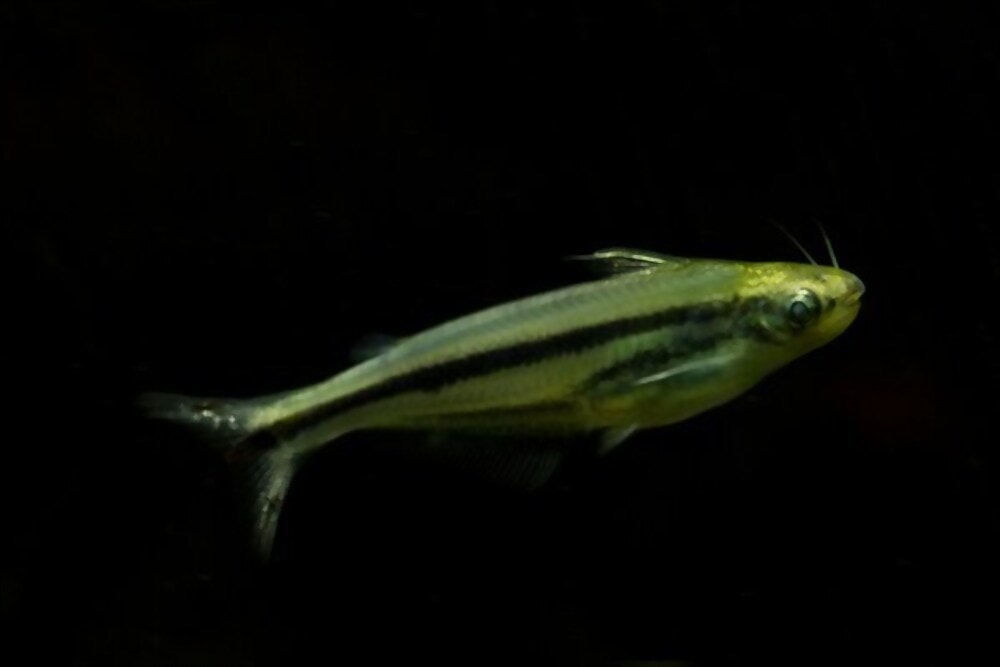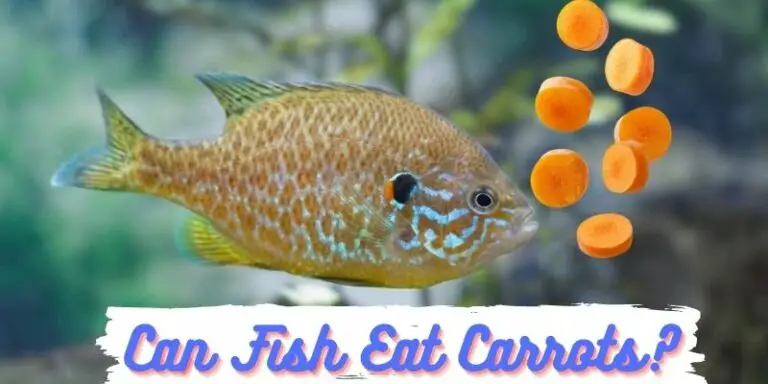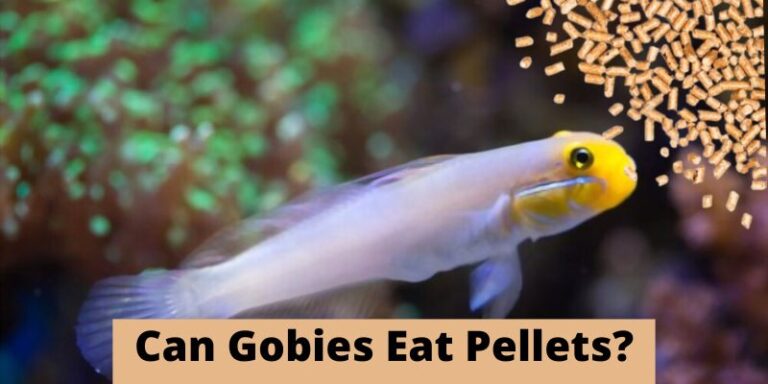What Do Glass Catfish Eat? (Foods & Diet Guide)
As a hobbyist, if you want to add to your freshwater aquarium’s charm, then glass catfish is the right fish for you. It has a beautiful transparent body that is dazzling to the eyes.
It is a small, fearful fish that can grow up to a maximum of 3.1 inches long. Due to its timid nature and small size, the diet is a determining factor of its well-being.
What kind of foods does glass catfish eat?
Although we generally regard glass catfish as omnivorous feeders and they are very selective in feeding. In the wild, they are found highly grown with vegetation, which serves to hide as we hunt for them.
They mostly prey on zooplankton, small worms, larvae of insects, and other small invertebrates. They are even known to be predators of small species that fit their mouths like baby guppies.
Feeding them in the aquarium is a difficult task, and it needs to be done correctly. Being very faint-hearted, they are not very quick in getting the food in a community tank.
Even if they are housed with other peaceful species, their approach towards the food would not be as quick as other tank members. It leads to a fundamental question right here.
Is your glass catfish really getting what you provide them with?
To ensure the answer is positive, feed other members of the tank first before feeding your timid translucent little dude.
As far as food is concerned, start feeding them with meaty live foods and frozen foods such as live or freeze-dried bloodworms, grindal worms, tubifex worms, and Daphnia and vitamin-enriched brine shrimp.
Once they get acclimated to the tank, you can add pellets and high-quality flake foods as an occasional part of the glass catfish diet.
What do glass catfish eat in the wild?
As we have discussed previously that they inhabit the areas which are densely grown with vegetation. Vegetation provides them with a varied range of food and shields them from direct contact with the bright light.
The submerged plant leaves and roots are the houses to many small creatures like planktons, larvae, and worms. Hence it is evident that they will get a lot to eat here.
Zooplanktons and larvae of mosquitoes and other aquatic insects make up a large portion of their diet in the wild. If we wrap it all up, the glass catfish will eat any fleshy thing in the water column from floating tiny meaty scraps to the small fishes of its compatible eating size.
What do different kinds of catfish eat?
The name catfish belongs to a diverse group of species varying greatly in size and thus feeding behaviors. There are almost 2900 catfish species worldwide.
It is believed that one out of every four freshwater fishes and one out of every 20 vertebrates in all of the world’s freshwater bodies are catfish of some kind.
Such great diversity comes with great physical and behavioral variations as well. Some catfish species are tiny in size and feed on tiny aquatic creatures, larvae, and some can grow up-to gigantic that they can swallow the larger fishes as a whole.
Feeding baby glass catfish
After the female glass catfish have laid their eggs, it will take 3 to 5 days to get hatched. It is important to dispatch the baby glass cats from the main tank as they are unlikely to survive the tank’s crowd.
The baby glass catfish are tiny, and you can feed them the newly hatched brine shrimps for a few weeks until they are of enough size to be moved back to the main tank. You can also feed them small mosquito larvae.
Feeding ghost glass catfish
Feeding ghost glass catfish in the aquarium requires a tricky mindset. This can be quite challenging for feeding this timid tiny thing in a community tank.

As we have discussed previously, the glass catfish is not very active in approaching the food as it can easily get scared of the movements made by other tank members.
Therefore, make sure your fish is getting the food as you are giving them. For this purpose, feed your glass cat last in the tank and observe it while feeding. Moreover, it is recommended to keep them in a group of 4 to 5.
The individual specimen will be hard to get acclimated to the tank conditions, and even if it does, it will always be stressed and keep hiding behind the plants.
But they perform well when kept in schools, and it becomes easier to feed them than to feed a single glass catfish.
As far as food is concerned, we mentioned previously that being carnivorous in the wild, they prefer a meaty diet, including blood worms, grindal worms, tubifex worms, and shrimp brine shrimp, daphnia, and mosquito larvae.
But once they acclimate to the tank, you can also feed them high-quality flakes, pellets, and homemade fish food for carnivores.
Feeding them a small proportion of these balanced diets, which they can finish in a minute or two twice a day would be more than enough to keep your fish happy and healthy.
What Do Butterfly Fish eat? A Complete Diet Guide
Feeding African glass catfish
African glass catfish is a different kind of catfish, and it is not very common in the aquarium trade. It is widely distributed all over African freshwaters.
Though it resembles the ghost glass catfish to some extent, they are totally two different species. Ghost glass catfish belongs to the Kryptopterus, and African glass catfish belongs to the Pareutropius genus.
Feeding African glass catfish is relatively easier than the ghost glass catfish. African glass catfish is carnivorous in the wild and so is in the aquarium. It hardly or does not accept the veggies in its diet.
It is not aggressive or even semi-aggressive. However, it will eat anything that will be of its compatible eating size. You can have trouble feeding it the dry foods when it is newly introduced in the tank.
Therefore, start feeding them with different kinds of meaty life as well as frozen foods. You can also feed them mosquito larvae. Once the fish gets acclimated, you can start dry foods as well.
High-quality homemade fish food for carnivores is enriched with nutritious ingredients and must be included in their diet plan.
Avoid overfeeding, it is better to feed them twice a day and enough of the amount that they can finish within two minutes.
Best food for glass catfish
Meaty food
Meaty proteinaceous food is the essential requirement of glass catfish. In the wild, these fish are wholly carnivorous and feed on various tiny creatures including zooplankton, aquatic insects, and their larvae.
When they are newly brought into the aquarium, they exhibit very shy and timid behavior and keep themselves hidden most of the time. This is the most critical time for the survival of your glass catfish. They need to be taken care of properly.
Smart and methodical feeding not only makes them acclimate quickly to their new home but also saves them from nutrition depletion and eventually wasting away.
They need to be fed a variety of live foods and frozen meaty diets, including live or frozen bloodworms, tubifex worms, and daphnia. Feed them brine shrimp from time to time as it is highly enriched with important vitamins. Mosquito larvae would be treated for them.
Flakes & Pellets
As we have already discussed, when they acclimate to the tank, you can also add high-quality flakes as an occasional part of their diet. Although they would still prefer a meaty diet, they wouldn’t deny flakes and pellets. Adding flakes and pellets to their diet plan will supplement their nutritional needs.
Fish food
If you have good experience in fishkeeping, you better know how to make high-quality fish food. Homemade fish food will have the purity of ingredients and add to quality nutrition for your small glassy catfish.
How often do glass catfish eat?
Now, that’s the question that really needs to be answered. We have already reviewed in detail the food that glass catfish eat, prefer to eat, and should be given.
Now the question arises, how often should they eat?
Of course, you can not feed them all the time or leave them unfed for a long time. Then, there must be a timing plan to feed this tiny glassy thing.
According to many experienced fish keepers and experts, these fish should be fed a moderate amount of balanced diet two times a day.
Speaking of moderate amounts, the amount of food that glass catfish can finish off within 2 minutes is considered a moderate amount.
What Do Guppies Eat? Diet For Your Guppies
Why is my glass catfish not eating?
Glassfish not eating anything could be a sign of stress. A stressed glass catfish is always hiding behind the plants and unwilling to show up in the center of the tank.
The stress is because the tank members discussed previously that the glass catfish is not an active eater. Any little movement made by the tank members is enough to scare the heck out of this fish.
It will compromise on its food because of fear. If your glass catfish is not coming out to eat, then you need to take out a few of the tank members and make sure to give them a calm surrounding.
Sometimes even in ideal tank situations, your glass catfish are not getting what you provide them with. As we already know that they are not active eaters and show a very slow approach towards the food.
So, it might be possible that the other tank members capture the food you are giving them before even reaching the glass catfish.
To resolve this problem, feeding your glass catfish last in the tank will ensure food availability to your transparent little fish.
Their feeding problem diminishes when they are kept in schools. School or group give them the confidence to swim around and get the food without any fear.
Conclusion
A catfish is a diverse group of species that includes many freshwater fishes inhabiting the floodplains and river basins of Thailand mostly.
But the glass catfish is almost the only popular catfish in the aquarium trade. It is also commonly known as ghost catfish and Phantom catfish.
Naturally, we can regard it as an omnivorous feeder. But it would rather have more of a meaty proteinaceous diet.
In the aquarium, a balanced diet with a proper feeding strategy for this timid fish in the community, the tank needs to be ensured. If not properly cared for in this regard, your unique acquisition can get depleted in nutrients.
FAQs
Are glass catfish bottom feeders?
Unlike larger catfish, species like Pictus catfish are bottom feeders and spend most of their time on the rocks or searching for food on the bottom.
The glass catfish are mostly found in the middle of the water column searching for food near highly grown vegetation. They are free swimmers and are not seen perching on the rocks or bottom.
Although they are mid-level swimmers they never go too high from the safety of the bottom.
How long can catfish go without eating?
Suppose you run a freshwater tank and you have a beautiful collection of some peaceful freshwater species including catfish. Everything is going fine until you have to leave the town for a few days.
The question is how long your catfish will go without being fed. Well, it is clear that in the wild, these fish don’t always get to eat every day.
Sometimes they go for long periods without any food, and as far as the aquarium is concerned, the glass catfish is not an active eater as we already know so, if you are out of town for a couple of weeks or ten days.
You don’t have to worry about your catfish as long as the tank’s conditions and hygiene were just checked before you left. Some catfish species can even survive 14 straight days without being fed.
Are glass catfish bottom feeders?
Glass catfish are known to live in the middle of a water column near highly grown vegetation where they prey on small insects and zooplankton. So, yes, unlike many bottom feeder catfish glass catfish are not.






